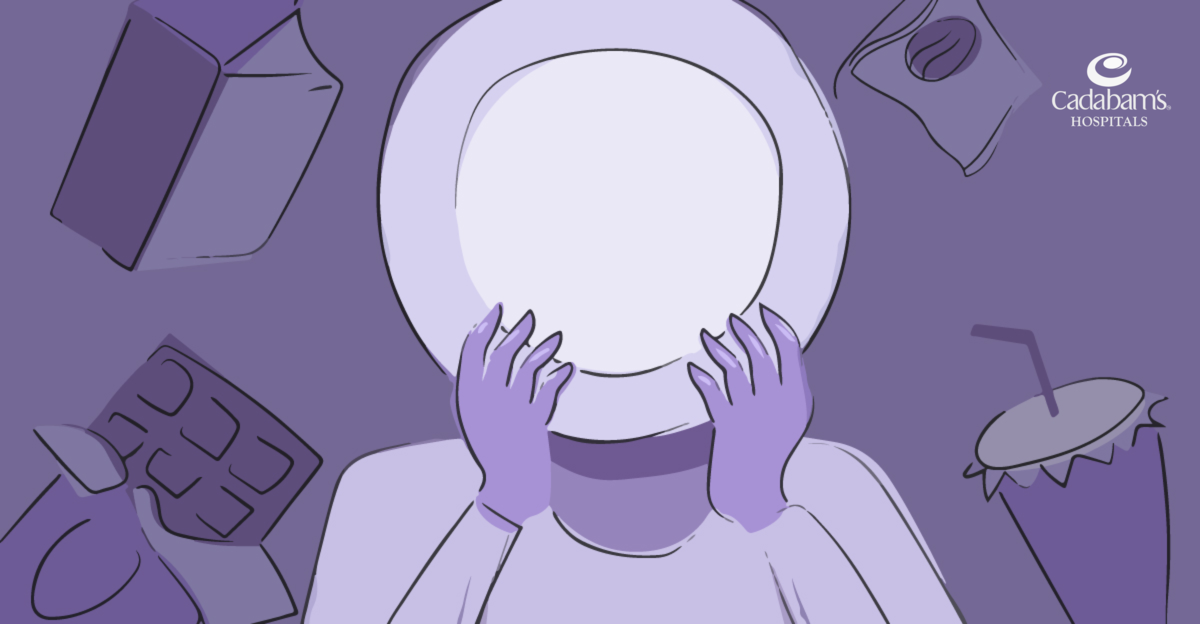Table of Content
Raise your hand if you’ve met someone who casually says, “Ugh, I can’t believe I ate that slice of cake last night, this is going to add so much weight to my hips!” and they follow it up with a check out of their body in the mirror? I have, we as human beings have all come to the point where we are so conditioned to be a certain way, look a certain way- we don’t end up realising that some behaviours we indulge in are more harmful than helpful for ourselves. Is this to say that this person has an eating disorder? No, we can never, and must never self-diagnose. However, can it be said that the person might have a somewhat unhealthy relationship with food and their body? Possibly. If not given the proper attention, it may develop into an eating disorder, a word that is thrown around in media and real-life constantly. But what exactly is it and what causes it?
What exactly are Eating Disorders?
Despite common knowledge, eating disorders are actually real, psychological conditions that cause unhealthy relations to form with food, eating habits and body shape/weight. Did you know that they can have serious outcomes if left untreated, and can affect a person’s mental health immensely? This is why they need to be taken seriously, as we would do with physical illnesses.
What causes Eating Disorders?
Psychologists have come to the agreement that there are several causes that can lead to an eating disorder, and it really depends on the individual’s personal case history.
Eating disorders can be hereditary- if it shows up in one twin, it is likely that the other will have an increased risk for it as well. They can also depend on one’s personality traits- perfectionism, neuroticism and impulsivity show a higher chance of developing the disorder. Cultural factors can also influence the development of eating disorders- external pressures to look slim and go for weight loss techniques, preferences for thinness and exposure to problematic media content are just a few of the ones. Gaining body weight is never seen as something that is desirable, therefore the measures one must resort to reach that standard set by society are usually extreme too. Brain messengers, which are such as serotonin and dopamine, which play an important role in the functioning of the body, can also be factors.
Types of Eating Disorders
There are very many types of eating disorders and some of the common ones are:
- Anorexia Nervosa- possibly the most common type of eating disorder that affects young people more, and is also very prevalent in young women. People tend to see themselves as overweight, even if they are probably the very opposite of that, and they have an unhealthy relationship with food which leads to them monitoring what they eat constantly. They either binge eat and purge their ‘guilt’ for eating too much, or they just restrict themselves too much. Either way, they fear gaining any kind of weight, when they really might be quite severely underweight.
- Bulimia Nervosa- another eating disorder that tends to affect women more than men. In this case, the individual will eat a huge amount of food, the food they usually avoid, in an uncontrollable manner. Following this, they tend to purge and compensate for the food they just ate.
- Binge eating disorder- an eating disorder in which people eat a large amount of food in a short period of time, and generally have no control over what they are doing during these binges (generally known as an episode of binging). This is generally followed by a sense of guilt, and this could be seen with increasing weight gain in the individual.
- Pica- a comparatively rare eating disorder, wherein people eat things that are not technically food, such as soil, chalk, hair, cloth, wool and many other such objects. It tends to be found more commonly in children, pregnant women and people with mental disabilities.
- Rumination disorder- something newly recognised as an eating disorder, in which the person regurgitates food they have chewed and swallowed, only to re-chew it and then re-swallow or spit it out. This is usually voluntarily undecided and is done soon after a meal is intaken. This appears in both children as well as adults.
- Avoidant/Restrictive Food Intake disorder- wherein the individual experiences disturbed eating patterns, generally, due to a disinterest in food, or certain tastes, colours, smells or textures. This appears equally in men and women.
In Popular Culture
In movies such as the iconic 1999’s Girl, Interrupted, and 2010’s Black Swan, there are both main and side characters who show accurate symptoms of mild, if not extreme cases of eating disorders. These, however, are somewhat accurate representations. It is usually the on-screen representation of a certain type of body, very thin and petite, which can lead to triggers for eating disorders to start.
Resources for HelpWhatever the issue, it is very important to reach out for help. With the right guidance and counselling, eating disorders can be cured- but it is very important to reach out to professionals. Early diagnosis and intervention time are key factors to prognosis. Please reach out to mental health professionals if you need to, and encourage loved ones to reach out for the assistance they require. At Cadabam’s, we offer a 24/7 helpline, and our hospital can also be contacted: +91 97414 76476. We also can be contacted via our website- https://www.cadabamshospitals.com/. Do this for yourself, and your loved ones.
How Cadabam's Help you for Addiction?
- 410+ Professional Consultants
- 1,00,00+ Happy Faces
- 120+ Currently Seeking Treatments









